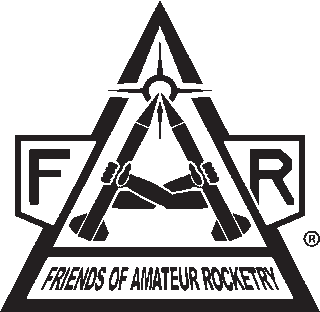The prizes:
- The FAR prize is $50,000.
- The Mars prize is $50,000.
- Awarded to and spent by the university on student rocket projects or engineering student scholarships.
- For a multi-university team, the prize will be divided by the ratio of team members from each university.
- If no one wins one or both prizes, the remaining prizes will be offered again in one-year.
To qualify the team must:
- Consist of a combination of current college or university undergraduate or graduate students, or college or university
undergraduate and graduate students that have just graduated that year. - Must have at least one faculty adviser.
To qualify to win the FAR prize the rocket must:
- Must have a bi-propellant rocket engine (NOT a solid, hybrid, or mono-propellant rocket motor/engine.)
- Must have a total-impulse of less than or equal to 9,208-lb-sec.
- Perform a static firing of the full-up rocket and submit a thrust-versus-time plot and video of the static firing 30-days prior to the start of the launch competition.
- A full-up rocket is defined as a rocket engine, propellant system, pressurization system, and rocket structure. It does not include nosecone, recovery system, and fins.
- If the rocket has competed before for DPF or FAR-Mars, it must have a new rocket engine.
- Utilize two-stage deployed parachute recovery with a drogue parachute deployed at apogee and main parachute deployed below 1,000-feet.
- Cannot be actively guided, must have fixed fins, and launch from a fixed launch rail.
- The launch apogee must be at least 30,000-feet and no greater than 50,000-feet.
- Rockets flying above 45,000-feet will receive negative points.
- Successfully recover with minimal damage.
- It is highly recommended that GPS/Telemetry be added to your rocket to enable easy location of your rocket when it lands. If you can't find your rocket, you will not be given the FAR-Mars money.
- Altitude must be determined by two commercially available recovery electronics.
- The altitude must be determined by the lowest altitude measured of the two.
- No added payload is required.
- Pass a safety inspection before they launch.
- Have a document that shows how it meets all the qualifications. This document must contain quantities of the propellants, thrust curve of the engine(s), empty weight of the rocket, dimensions of the rocket, fin number and size, calculations of maximum altitude, and description of the recovery system.
- Construction of the rocket must be complete before the time of the safety inspection.
The safety requirements for the inspection:
- Propellant and pressurant tanks must be proof tested to 1.5 times the maximum operating pressure.
- Relief valves on tanks must be rated at 1.25 times the maximum operating pressure.
- Propellants filled and drained from the bottom of the rocket. The fill and drain can be above the rocket engine.
- Propellant tanks must have the Rocket Emergency Depressurization System (REDS), see tab on Launch Contest pull-down menu.
- Tanks must have remote electronic pressure instrumentation for tank pressures. (Yes, pressure transducers and telemetry or data acquisition) (No, telescope/pressure gauges)
- Electromechanical, pneumatic, or lift-off release of pressure umbilicals. (No rope or cable pulls)
- Lift-off or pull release of electrical umbilicals for remote vent controls and pressure instrumentation.
- Electrical ignition with key lock-out on the pad and with the same key lock-out at the main launch controller.
To qualify to win the Mars prize the rocket must:
- Utilize only liquid oxygen and liquid methane as the bi-propellants.
- Meet all the FAR prize qualifications and scoring.
- A Mars prize qualified rocket can win both the FAR and Mars prizes, if this rocket has the highest score for all launches.
Launch day:
- Launch days are TBD.
- Teams will be limited to 20-people.
- The launch site will be limited to the teams scheduled for that day.
- The team may show up the day before to ready their rocket.
- Teams launching on Sunday will not be allowed to arrive at the launch site until after the Saturday launches are finished.
- The launch teams using a personal/custom launch rail (not owned by FAR) can set the launch rail up in advance, but cannot put their rocket on the rail or setup their GSE until their scheduled slot.
- Each team gets a maximum of 2-hour time limit to get the rocket on the launch rail, set up the GSE, fuel the rocket, and launch the rocket.
- Date and time slot will be selected on a first-come first-served and on launch readiness basis.
Scoring:
- Maximum score will be acquired if 45,000-feet is obtained.
- IF(Altitude >= 30,000) AND (Altitude <= 50,000) THEN Score = Altitude - 6*(Altitude above 45,000) ELSE 0
Sign Up:
- On the FAR website.
- Launch teams need to register 60-days in advance, on the FAR website.
- Confirm intent to launch and select launch day 14-days before the launch dates on the FAR website.
- Launch dates will be assigned on a first-come, first-served basis.
E-Mail Questions to: mark@friendsofamateurrocketry.org
